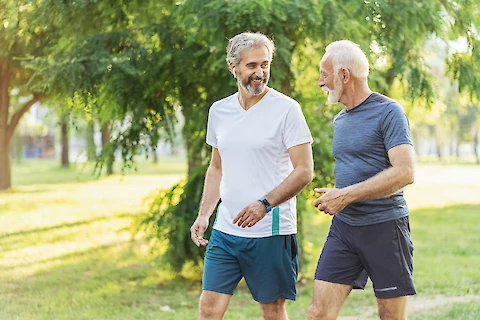
If you or a loved one in your care is a senior, it's a good idea to have a clear understanding of osteoporosis. With this knowledge, you—and your senior loved one—can feel empowered to take control of bone loss and maintain a high quality of life. Here's an overview of osteoporosis, its risk factors, and what you can do to promote bone health.
What Is Osteoporosis?
Osteoporosis occurs when the rate of bone loss (resorption) exceeds bone formation, leading to a decrease in bone density. As a result, bones are more prone to fractures. Seniors are particularly vulnerable to osteoporosis because the aging process naturally results in a reduction of bone mass, making it increasingly important to be aware of the condition and its risk factors.
Unmodifiable Risk Factors
Several factors can increase one's risk of developing osteoporosis, some of which are outside of our control. These are called unmodifiable risk factors. Age is one of them, as bone density tends to decline as we grow older. Gender also plays a role, with women being at greater risk due to the rapid bone loss that occurs after menopause. Family history and ethnicity are additional factors that can predispose someone to osteoporosis, with individuals of Caucasian and Asian descent having a higher risk.
Modifiable Risk Factors
There are also several risk factors within our control. Diet, exercise, and lifestyle choices such as smoking and alcohol consumption can all impact bone health. Certain medications and medical conditions can affect bone density.
Minimizing Modifiable Risk Factors
To minimize modifiable risk factors, it's essential to maintain a balanced diet rich in calcium and vitamin D, which are vital nutrients for bone health. Foods such as dairy products, leafy greens, and fish can provide the necessary nutrients for strong bones. Engaging in regular physical activity, especially weight-bearing and balance exercises, can also help preserve bone density. Quitting smoking and limiting alcohol intake can have a significant impact on overall health and help prevent osteoporosis. Keeping an open dialogue with your healthcare provider will help ensure that you are taking the best possible care of your bones.
Preventive Measures
In addition to minimizing modifiable risk factors, there are specific preventive measures individuals can take to maintain bone health. Calcium and vitamin D intake through diet or supplements support bone growth and repair. Weight-bearing exercises, such as walking, dancing, or resistance training, can encourage bone formation and help counteract age-related bone loss. Balance and flexibility exercises, like yoga and tai chi, can improve posture and coordination, reducing the risk of falls and fractures.
Healthcare providers may recommend medications to prevent or treat osteoporosis, especially for those with severe risk factors or existing bone loss. Regular check-ups and bone density screenings can help monitor bone health and determine the most appropriate course of action to prevent or manage osteoporosis.
Stay Strong With Senior Helpers
If you or a loved one in the San Gabriel Valley, Arcadia, Pasadena, La Cañada Flintridge, or Covina area needs assistance with in-home care, from help with day-to-day chores to assistance with bone-strengthening activities, contact us at Senior Helpers San Gabriel Valley for compassionate and professional support.